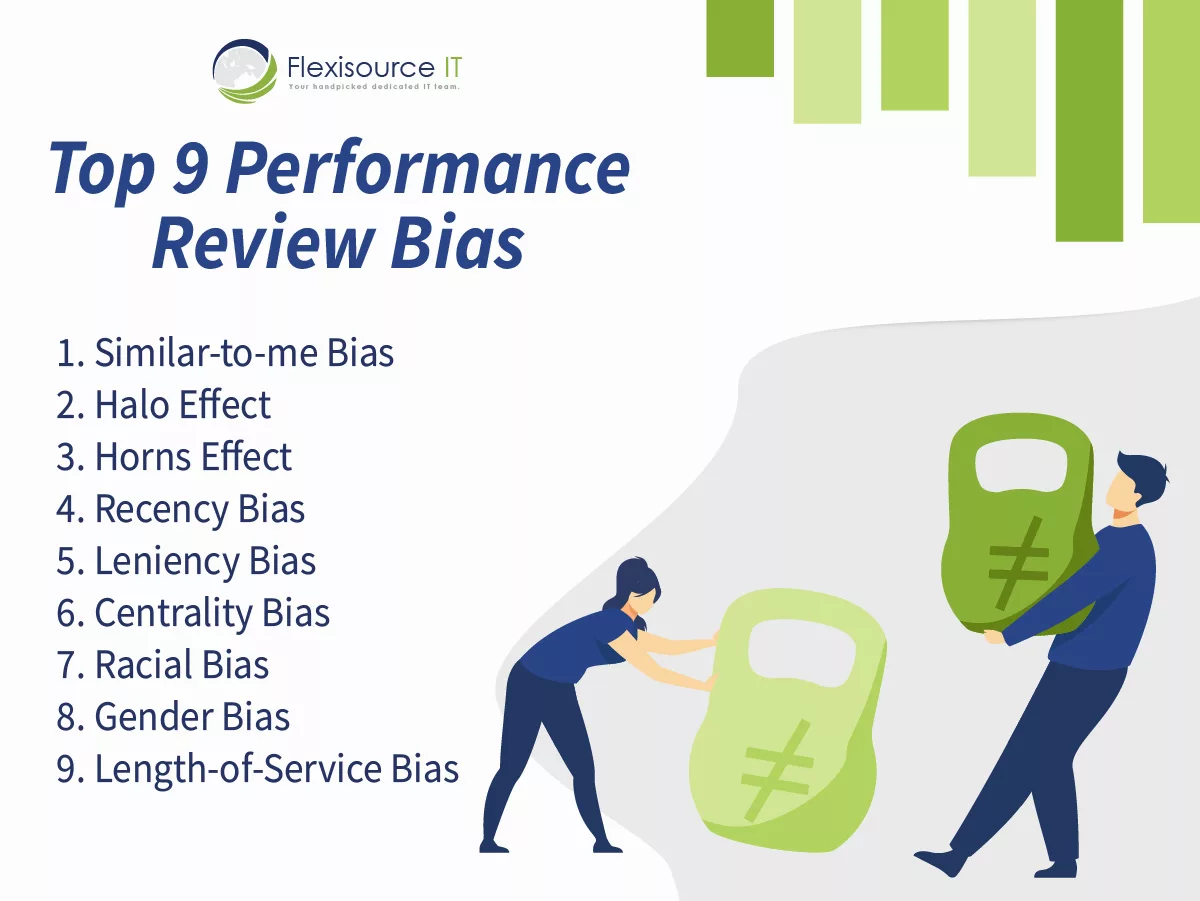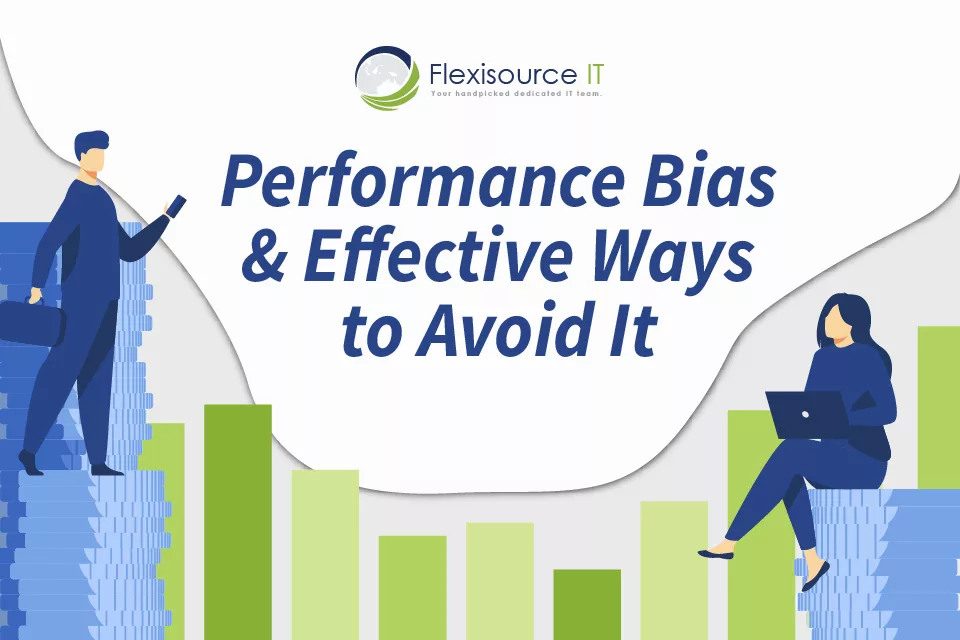People are prone to all biases. We always try to make the situation better by assessing conditions through our own eyes. Even at work, having biases is inevitable. Still, it’s essential to be fair and objective when evaluating job-related assessments, especially critical to one’s life and career.
There are tons of factors that need to be considered when evaluating an employee. None of these should include personal traits or quirks. However, many researchers and psychologists agree that managers usually exhibit biases in their ratings when conducting performance reviews.
It’s important to understand, nevertheless, that being biased has specific implications for employees. These will be significant driving factors in hiring, promoting, or even firing an employee. And given this fact, managers must ensure that their review will be fair and square.
As such, this article will tell you the best way to avoid performance biases when completing performance reviews and keep your junior team members motivated.
Table of Contents
Types of Performance Bias Review
A lot of leaders commit performance appraisal biases when evaluating an employee.

Here are some common distortion and measures on how to prevent it:
1. Similar-to-me Bias
A lot of us probably like people who are like us. Similar-to-me bias is a predisposition of managers to give a higher rating to employees with similar skills, education, culture, backgrounds, and interests. This performance review bias is critical to the workplace as it affects the overall diverse makeup of an organization. The work environment might feel less inclusive to employees.
How to avoid it: To avoid this performance bias, management should require specificity on managers by following criteria and interview questions on their assessments. In three separate studies conducted by Yale researchers, they found that using criteria before the actual evaluation less likely causes biases.
2. Halo Effect
Halo effect in performance appraisal is when a person’s performance is evaluated based on only perceived good traits and features. This bias tends to rate employees uniformly based on their high qualities, creating a domino effect on other items. For example, if a worker has no absences, their supervisor might increase their rating in all other work areas.
How to avoid it: Managers should not only base one’s review on their excellent assets. One effective way to prevent this performance bias is by performing a complete 360-degree check on the employee by assessing multiple areas of their work performance. They can also ask other sources, including colleagues, to see various perspectives to evaluate.
3. Horns Effect
Horn’s effect is similar to the Halo effect. But instead, an employee is appraised purely on the negative quality that was perceived. This bias can result in an overall lower rating that may cause the issue to both management and employee. One good example of the horns effect is when you think an overweight employee is lazy compared to a fit coworker.
How to avoid it: Managers need to remember that individuals are unique and complex. To avoid this performance bias, do not define a person based on a single trait, no matter how perceptible. Remember that people should not be determined by a single personality. They also have good qualities that you may overlook right away.
Good to know: Tips to a Perfect Startup Pitch to Incubators
4. Recency Bias
Recency bias in performance management is when a supervisor focuses on the most recent event when evaluating an employee instead of over periods. The best example of this bias is when someone recently closed a big sales deal. The evaluator marked everything else as positive in their performance review.
How to avoid it: To prevent this performance bias, managers need to develop the habit of collecting feedback and reviews on their employees at different points throughout the year. It’s a great way to monitor the employee’s performance from different perspectives at every milestone.
5. Leniency Bias
Leniency bias ensues when supervisors give a magnified rating to an employee with the average work quality. Managers do not want to have a challenging conversation with their team members. As such, they avoid providing low scores. In addition, they tend to give lenient bias in hopes of helping an employee improve themselves. They try not to cause any demotivation to their team members.
However, this bias has tons of adverse effects on the employee and team morale. It can weaken the objectivity of those who really have distinguished achievements and top performers. As a result, management may be challenged to identify employees who really deserve a promotion or raise. This can likewise lead to a break in motivation and performance.
How to avoid it: To avoid this performance bias, managers should practice a continuous feedback method. This can mutually help managers and employees to be comfortable in exchanging feedback with each other. Training this mindset will also help the employees to develop themselves and potentially avoid this case.
6. Centrality Bias
Centrality bias is when managers rate most areas in performance review in the middle of a rating scale. Some managers are reluctant to provide extreme scores because they want to be safe from any prejudice. While moderation is good in some circumstances, this can, however, affect employee rating.
Next read this: Top 10 Incubators and Accelerators For Tech Startups
Management can interpret this as the average employee having no improvement over their time working for the company.
How to avoid it: To dodge this performance bias, evaluators need to create a better rating scale. Eliminate the neutral option of a 1-5 scale. Instead, try switching to even numbers. This way, you will know the actual rating of an employee.
7. Racial/Implicit
Workplace diversity in business is essential. Still, racial bias in performance reviews is prevalent all over the globe. Many racial stereotypes still affect a lot of performance evaluations, like Americans are good in communication or Asians are hardworking.
How to avoid it: To prevent racial performance bias, evaluators need to see employees as individuals rather than a representative of their race. Define people on their skills and work ethic. Take time and reflect on their accomplishments and remove all stereotypical ideas in your head. You can also increase managers’ exposure by conducting diversity training. Learn about their culture.
8. Gender Bias
Despite the improvement in gender equality this year, gender bias is still widespread in many workplaces. According to the pew research center, about 42% of working women in the US have faced discrimination because of their gender. Many of these women faced gender bias in terms of growth opportunities and the pay gap.
Many managers still practice gender bias in performance reviews. They tend to focus more on their personality and attitude towards women, contrary to their achievements, accomplishments, and work ethics.
To avoid it: Management needs to create structured feedback forms with predefined criteria for all employees to evade this performance bias. Some evaluation formats can bypass supervisors’ gender biases. According to Stanford researchers, putting open boxes on feedback forms opens an avenue for inclinations. Likewise, the evaluators need to apply these criteria across all employees, no matter what their gender is.
Moreover, management can also nudge managers into learning specific behaviors that may impact their evaluations. Companies can try to conduct gender equality seminars to help them remove their gender biases and stereotypes.
9. Length-of-Service Bias
Suppose you ever encounter an employee getting high-performance evaluation due to being in the company for years. In that case, you are experiencing length of service bias. This bias has been a big issue for a lot of large enterprises throughout the world.
When an employee has a lot of institutional knowledge of the company, some may equate this as a model performer. Thus, many businesses give these employees much credit that they don’t deserve, simply due to their longevity and loyalty.
Related reading: Key Differences Between Startup Incubators and Accelerators
How to avoid it: To avoid this performance bias, managers need to remember that length of service does not equate to excellent work quality. They should also be evaluated to the same standards as other employees.
Recognize and Overcome Your Biases
Despite the efforts of many people around the world, many individuals are still not good at knowing their own biases. In fact, according to this research, people underestimate their own preferences. A lot of people still need help in recognizing their own biases.
And even though we will never be completely free from biases, we, as humans, have the ability and responsibility to educate ourselves. We need to improve our own mentality and learn how to reduce bias in performance reviews.
Moreover, let’s give ourselves permission to be human and recognize our own limits. This does not mean giving up and ignoring our biases. Instead, knowing our limits will enable us to create a system, procedure, and even technology that can help us make better decisions. Many tools can help us mitigate this bias prevention until it becomes a part of our lives. Take time to do this before your following performance review. Ask for help, set up a criterion, and be consistent.
Avoid these performance biases and increase employee engagement and retention.
Pamela is a full-time content writer and a lifelong Philomath. Her previous experience as a research analyst made her passionate about traveling the world and understanding how it works. During her day off, you can often find her indoors, writing stories or oil painting.


